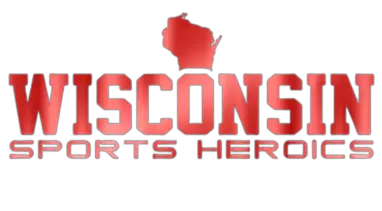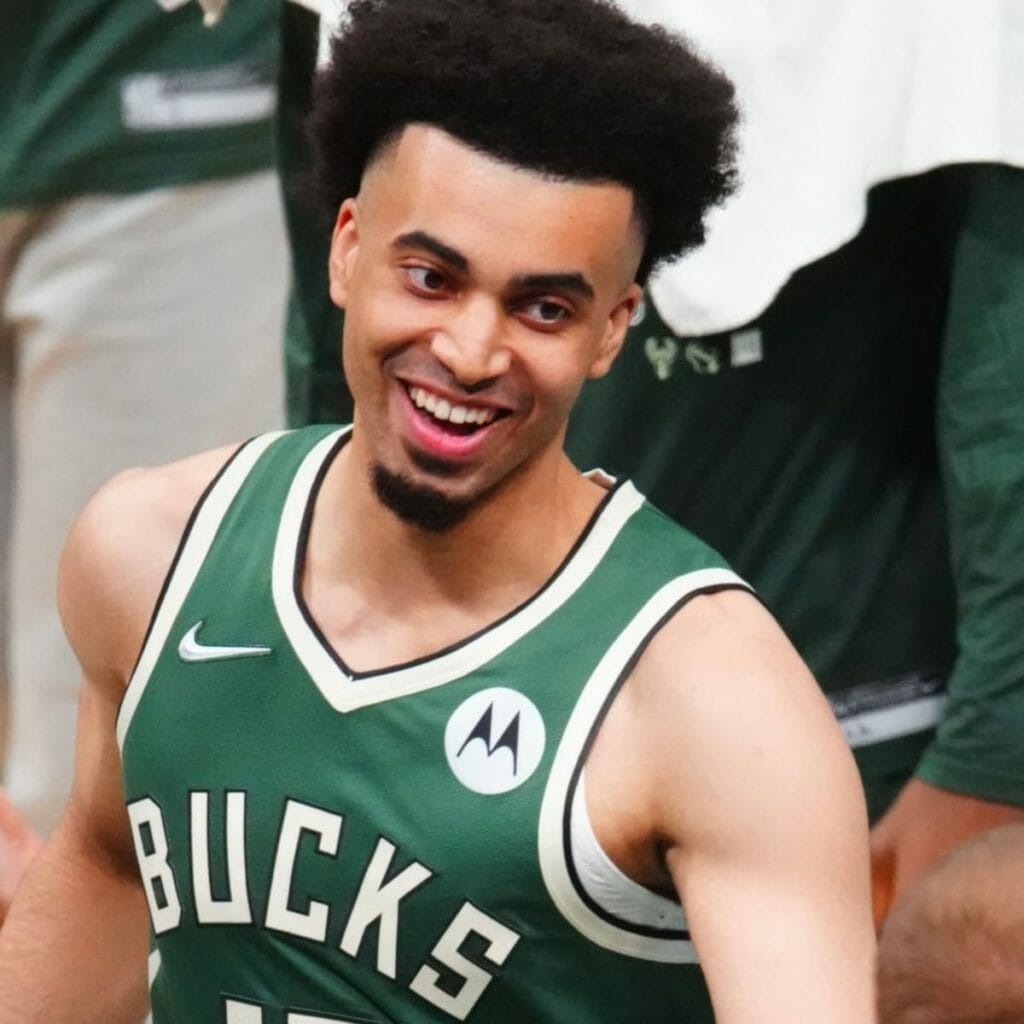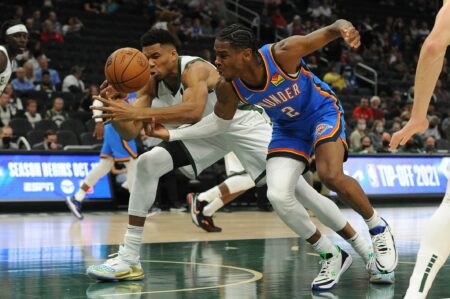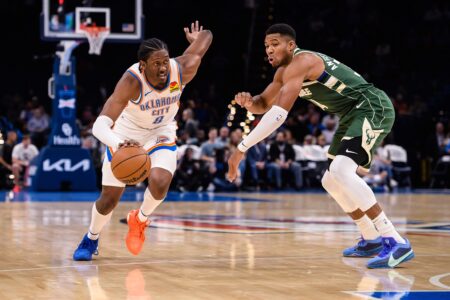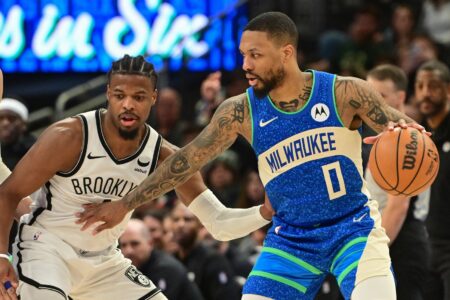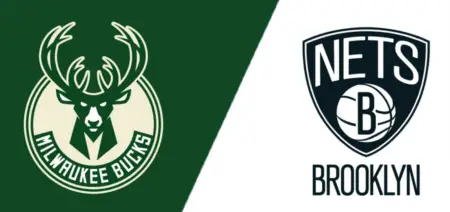The Bucks are in unfamiliar territory. It’s only their second ever season as defending champs, and it’s the first time since 1987 that they’re coming off of three consecutive regular seasons with a winning percentage higher than 60%. Gone, for now, are the days of building a contender or hoping to draft the next big thing. Giannis and friends are here – and here to stay – which means Milwaukee is facing a new team-building challenge. Instead of trying to take the final step like the last few years or toeing the line between all-out rebuild and some level of competitiveness, like they did for much of the Brandon Jennings era, they’re now trying to keep a championship-level team stocked around the edges without completely sacrificing the distant future. Because for a small market team, that future will always mean something, no matter how far away it appears.
Keeping and developing players like Donte DiVincenzo (25 in January), Jordan Nwora (23), and the mix of other younger players on the roster – currently Javonte Smart (22) and Sandro Mamukelashvili (also 22) – must be emphasized to some degree. The current core won’t last forever. Brook Lopez is 33 and dealing with a serious back issue. Jrue Holiday is 31. Khris Middleton is 30. Pat Connaughton turns 29 in a few weeks. Small markets don’t have the luxury of going broke and worrying about later when it gets here. A vision for the next five and ten years is a requirement.
The Nwora Dilemma
And yet we’re still a ways away from having to focus too much on the future. Giannis is 27 and, theoretically, just entering his prime. Bobby Portis and Grayson Allen are 26. Khris and Jrue should have a lot left in the tank, even on the other side of 30. And another title, even just one, over the next few seasons, is worth a down period in the years after. Hanging onto a young player for the sake of development when he offers nothing to the team’s title hopes is as wrong as trading away every young player possible for the sake of veteran depth.
This is the line that must be walked. Competing, but competing without losing all thought of player development. Enter Jordan Nwora, a player with clear scoring potential that has yet to show many signs of the type of all-around play that will likely be required to carve out any sort of significant role deep into the playoffs. So what do the Bucks do? Keep giving Nwora minutes in the hope that he will continue to mature as a player down the stretch? Hold onto him for his potential either way? Or use that potential to turn Nwora into a playoff-ready veteran that will boost the team’s odds of defending their title? We only need to look to PJ Tucker last year to see an example of a relatively cheap player turning into a massive playoff difference maker. Nwora could grab a comparable return in trade.
Ultimately, the play of Giannis, Khris, and Jrue will key any additional title runs. The players already in Milwaukee will form the foundation of whatever happens next. But titles can be won around the margins (look again to Tucker), and the difference between Nwora and a more capable vet now or a fully-fledged Nwora versus an empty hole a few years down the line likely won’t be irrelevant. Determining which difference is worth more is the key task at hand – and the reason that very few are cut to be a GM. These aren’t easy questions to answer. But let’s try anyway.
Gauging Nwora’s Progress and Potential
Progress is much easier to quantify than potential, so let’s start there. After seeing very little court time in last year’s rookie campaign, Nwora has been getting a lot more run this year, especially with all of Milwaukee’s injury and covid issues. He’s already closing in on doubling last year’s minutes, playing 522 in 27 games. What do his numbers tell us?
He’s a decent volume scorer
Even now, Nwora is capable of scoring at the NBA level. He’s scored in double figures in ten games this year, which is more than one-third of his appearances, including four in a row this week. He went for 28 in a bigger role in the blowout loss to Cleveland. When you give him the opportunity, he can put the ball in the basket.
He’s not particularly efficient
Nwora is shooting 40.1% from the field and 36.9% from three, the latter coming on roughly four tries per game. That’s above average three-point shooting, which is far from bad, though it is a step down after his very strong 45.2% mark last year. Hopefully that’s due to random variation and not the result of being asked to take a few more threes per game. There’s not much to be said about his overall field goal percentage other than pointing out that it’s pretty bad. Nwora ranks near the bottom of the league in efficiency on two-pointers.

Copyright: 2021 Mike Stobe
The good news is that efficiency issues in a young player are common. Bradley Beal shot below 44% on twos each of his first three seasons. Zach LaVine shot 42% from the floor and 34% from three in his rookie season. Even so far this year, Middleton is shooting 41.2% from the field and 34.6% from deep. These are all obviously very lofty comparisons not meant to put Nwora on the same plane as these guys, but they drive the general point home.
The problem is less one of the future and more one of the present. Role players don’t often get the kind of opportunities that you need to turn mediocre efficiency into useful output. When you bring players off the bench, you either want them to be very good at one thing in short bursts (a shooter like Bryn Forbes) or good at a lot of things for long periods of time (Connaughton played this role quite well last summer).
Microwave scorers can fit into the former category, but they’re generally not all that useful on a team that has three consistent scoring and playmaking options and a number of shooters and post scorers around them. There’s simply not much room for Nwora to just do his thing as a scorer. It’s also worth pointing out that, like Forbes, the one-skill players tend to be prone to being exposed in a way that makes the positive thing they do provide relatively useless in the grand scheme of their game.
He’s a solid rebounder
/cdn.vox-cdn.com/uploads/chorus_image/image/69299092/1318379793.5.jpg)
Nwora is pulling down 7.5 boards per 36 minutes after grabbing 7.9 per 36 last year. That puts him right around the 67th percentile and guys like Paul George, PJ Tucker, Harrison Barnes, Jaren Jackson Jr, and Kevin Durant. For a 6’8″ second-year player, that’s not a bad place to be. He’s an effective enough rebounder. Whether that means much of anything is probably the better question to ask, but we’ll save that for another day. I would generally say that the rebounding difference between Nwora and someone like the 6’6″ Mikal Bridges (4.2 boards per 36) is pretty irrelevant in the game as a whole, but we might as well give Nwora credit for rebounding like his body suggests he should.
He’s not providing much offensively outside of scoring
Nwora has produced just 29 assists in 495 minutes this year. For shock value comparison, Chris Paul has 38 assists in his last 115 minutes. No one is asking Nwora to pass like Paul, and he has stepped up from his 0.2 per game rookie year average. It’s also worth noting that Connaughton averages just about 1.5 assists per game. You don’t need to be handing out assists left and right as a role player wing. But when you’re looking for ways to complement your overall game, passing is a decent place to look, and Nwora isn’t providing anything to hang his hat on there.
He’s not really getting to the line either. His 0.088 free throw rate is 249th out of 272. For a score-first player that’s not really a spot-up shooter, that’s less than ideal. He needs to be shooting more free throws.
He’s also been awful from the midrange, which isn’t exactly a problem for a role player. You don’t want them taking those shots anyway. But shooting 4-21 on shots in the 16 ft-3PT line range is pretty brutal. I’ll buy a Jordan Nwora bobblehead just to throw it off the tallest building I can find if he pulls up for an eighteen footer in a playoff game (he did shoot 8-16 on those shots last year which is as meaningless as the 4-21 with the small sample sizes).
The advanced metrics are pretty bad too. Nwora has a PER, which is a measure of statistical productiveness/efficiency, of 11.4. That’s well below the league average of 15. He’s produced -0.1 offensive win shares, good for 446th out of 513 NBA players this year. He also has an offensive box +/- of -1.7. Nwora hasn’t played quite enough to qualify there, but Cade Cunningham ranks 172nd out of 196 qualifying players with his offensive BPM of -1.7.
There’s nothing to suggest positive defensive impact
I don’t think anyone is going to argue with you if you say “Jordan Nwora isn’t a good defender”, but there are some numbers to back the claim up. He’s averaging less than a steal and block each per 36 minutes. That’s not necessarily a bad thing, but disrupting offensive flow by forcing turnovers or blocking shots is generally an area where iffy defenders can make their mark. Nwora isn’t doing that. His defensive BPM is -1.1, and it would rank right around 160th if he were to qualify. His 0.6 defensive win shares rank 160th in the league. There’s just nothing here to challenge the notion that Nwora is a bad defender.
Recapping and Discussing Potential
The bottom line is that there’s little Nwora brings to the table that’s all that valuable to the Bucks right now. He’s an interesting scoring prospect that can already score at a decent rate. That’s about it. He doesn’t pass very well. He doesn’t play defense very well. There’s not really anything outside of his ability to put ball in basket that you can point to as something close to a positive.
Even his shooting, which could be valuable in a playoff setting, has been down this year. There’s reason to hope that last part will change by the summer, and it’s likely that teams will have a harder time exposing Nwora and forcing him off the court than they had with the much smaller Bryn Forbes. But turning his potential “maybe they’ll be alright” spot minutes into someone who might play a bigger, more stable role is pretty appealing, and it’s certainly worth considering as we get closer to the trade deadline.
Before we jump on the trade Nwora train, we should ask some questions about what he might turn into. Coming up with an answer here is far easier said than done, but it does seem relatively safe to say that he won’t be a star. Anything can happen, but it’s not likely. There just aren’t any signs of him being good enough at enough things to turn into a true star-level player. The more realistic question is where he falls on the spectrum between NBA starter and roving bench scorer.
To gain some perspective, we can try to draw some comparisons to his numbers so far this year. The likes of Kevin Garnett, Luol Deng, Rashard Lewis, and PJ Washington have averaged within half a point and rebound of Nwora’s current per 36 numbers in their second seasons. But so did Tommy Kron and Mark Kalarie, and both were out of the league soon after. So Nwora’s point and rebound numbers aren’t good or bad enough for us to reach a strong conclusion about what he might become.
If you add a 35% three-point cutoff, only Washington and Brian Cook join Nwora. Cook played 9 NBA seasons, never cracking 20 minutes per game. Washington is a key bench player for Charlotte, playing about 25 minutes per game, in his third year. If that means anything, it might put Nwora in a slightly better spot than total ambiguity on his future, but it definitely doesn’t guarantee an eventual emergence as a starter.
The advanced metrics don’t say a whole lot either. There are plenty of random players to have posted a BPM below -2.5 and a PER below 15 in their second season, but you also find guys like Evan Fournier, Arron Afflalo, and Kelly Oubre. All three probably match with Nwora pretty well as potential career comparisons. In sum, trading Nwora just for the sake of making a trade is short-sighted. He could certainly become a useful NBA player. But he should be far from untouchable if the Bucks find an opportunity to make a move.
What would/could we trade Nwora for?
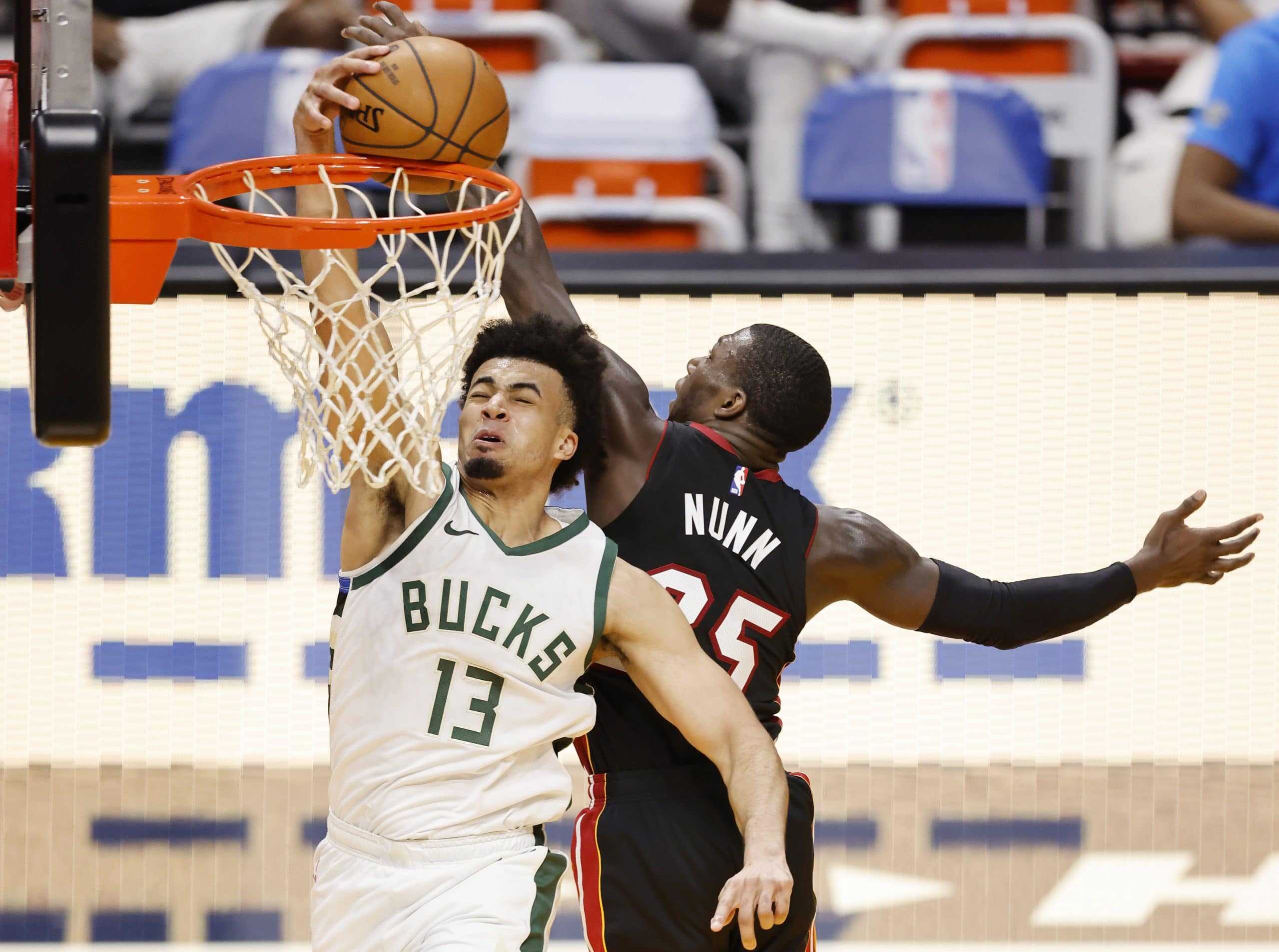
With that, we need to consider one last thing. What needs can the Bucks address through trade? Let’s look at some position groups, starting with the nine guys that should, assuming full health, play a postseason role as things stand. Don’t pay too much mind to the categories – some players could fit into multiple.
- BACKCOURT
Jrue Holiday (starter)
Grayson Allen (likely starter)
Donte DiVincenzo (potential starter, key bench player)
George Hill (bench guard option)
- WINGS
Khris Middleton (starter)
Pat Connaughton (key bench player)
- FRONTCOURT
Giannis Antetokounmpo (starter)
Brook Lopez (likely starter)
Bobby Portis (key bench player)
That’s a pretty strong eight man rotation with Hill playing a ninth-man insurance role. Throw in Thanasis, DeMarcus Cousins, Wes Matthews, Rodney Hood, Semi Ojeleye, Nwora, etc. for spot minutes in various roles here and there, and there aren’t many holes in what the Bucks run out. There are only two potential issues as I see it.
One is Brook Lopez. It’s far from a guarantee that he’ll be back and in game shape by the time the playoffs roll around. If that does end up happening, there’s a lot of minutes for Portis and Cousins to fill. Finding another quality big, preferably one of the less traditional variety for offensive spacing and defensive switchability, would become key in that scenario. The Bucks likely have some sense of Lopez’s health prospects, which should help them know what to do here. They wouldn’t necessarily need to target a 5 with Giannis able to move up a slot, but it would need to be someone with size.
The second is the PJ Tucker role. Allen, DiVincenzo, and, frankly, Hill too, are all capable of delivering more offensive variety than Tucker if we stay with the current roster and hand those minutes to them in the postseason. But there’s a real chance the Bucks would miss the physicality and toughness Tucker brought on the wing defensively. DiVincenzo is a very smart defender capable of causing chaos, but he’s not the same type of player as Tucker. With Ojeleye struggling early on, it’s not clear who Milwaukee would turn to on the wing if a series turns into a dogfight.
So if Lopez’s situation looks dire and another big is needed, or if the Bucks continue to lack an imposing wing presence beyond their Big 3, it makes sense to start exploring some trades. And Nwora, as a young player with some promise who also hasn’t really broken into the Bucks fully healthy rotation, is the prime candidate to be at the center of any relatively significant trade Milwaukee makes. If the right opportunity arises, Horst should pull the trigger. If not, we’ll continue to see if Nwora’s offensive promise can turn him into a real threat at the NBA level. It’s a win-win. Unless we make the wrong decision. And that, again, is why so few are cut out to be NBA GMs.
Follow For More!
Follow me on Twitter @MikeRegan09 and follow us @WiSportsHeroics! To read more of our articles and keep up to date on the latest in Wisconsin sports, click here!
